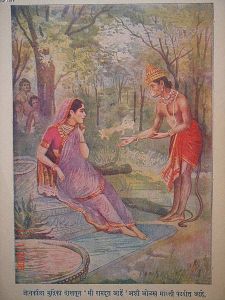A few days back, I was conducting a training session on Inter-personal Effectiveness and we got down to discussing the importance of self disclosure and feedback in building long term relationships. Of course, each of these requires something very basic – establishing trust.
Trust has been the backbone of successful communication for all eternity. Consider the Ramayana – Hanuman’s first meeting with Sita in Ashoka Vatika after she was abducted. Establishing trust with Sita was crucial for any communication to even begin. Hanuman knew that he would not be taken at face value so he had to establish his authenticity. He first started talking about Shri Ram – a subject dear to Sita. Hanuman praised Sri Ram and gave details of Lakshman to gain acceptance with Sita. Sita softened towards him and started paying attention – but she still had her doubts. He then went on to describe her abduction in detail to her – information that a rakshak would not have had. And finally he used his trump card – the ring given to him by Shri Ram.
Innumerable business lessons can be drawn from this simple episode
- To establish trust, discuss a subject close to the other party’s heart. Wait and watch his response. Has he become more open to sharing or listening or is he still closed?
- Share information and proceed the conversation only once the other party gets interested and (maybe) concerned. You don’t want to give offence, so proceed with caution.
- Finally, show your best card when you have won the other party’s trust completely. Offering everything right away may be viewed as interference or desperation or worse, a lie. Wait for credibility to be established.





